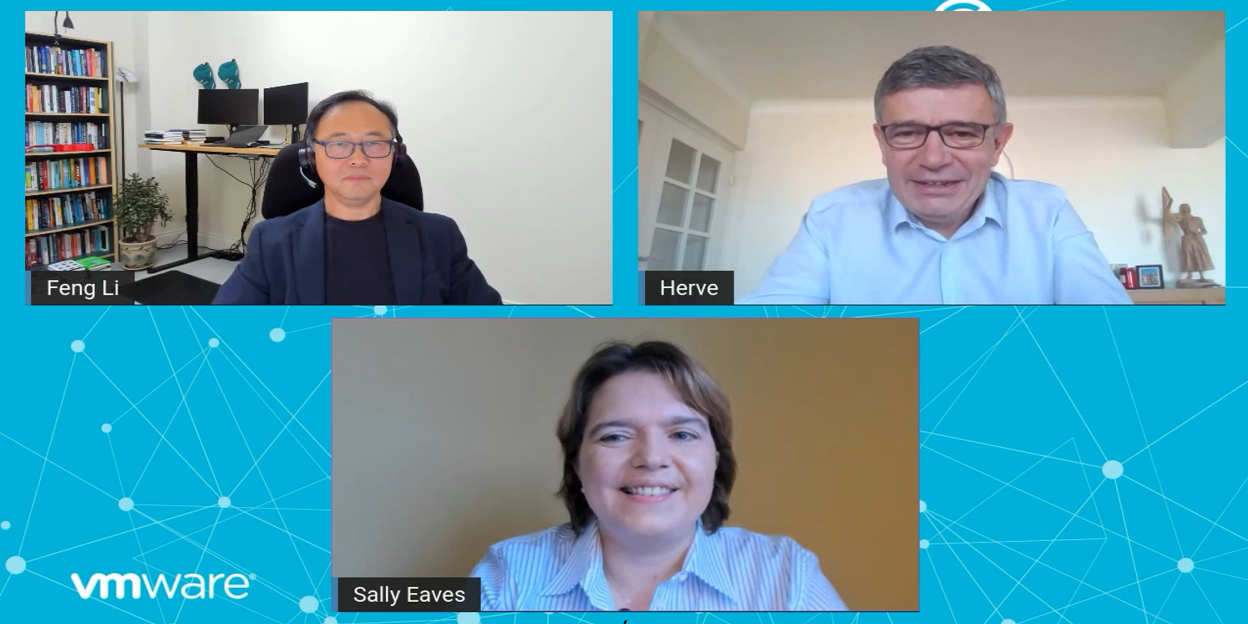Most organizations have more ideas than they have the time or money to implement. But where they fall short is in converting those ideas into business outcomes.
This conundrum formed the crux of a recent conversation I hosted on LinkedIn Live, where I was joined by two exceptional guests – Professor Feng Li, Chair of Information Management at Bayes Business School at City, University of London and Dr Sally Eaves, Global Strategy Advisor, Professor of Emergent Technologies and Founder of Aspirational Futures. Our event followed the launch of our new research, which explored the role of data in bridging the ‘innovation-execution gap’. We discussed why business leaders struggle to take innovative ideas to market, and the ways in which cloud can help deliver some of these business outcomes at the pace required.
Here are my key takeaways from our discussion.
#1 Technology Adoption and Increasing Digital Complexity Are Causing the Innovation-Execution Gap to Widen
Our research concluded that despite the benefits that organizations get from making significant investment in technologies, infrastructure and services, in many cases, the innovation-execution gap has actually widened in the last few years. Why is this the case? Professor Feng Li put it down to three key factors:
- First, as businesses increasingly invest in emerging technologies like AI, ML, BDA and multi-cloud, their expectations grow as well, and they’re trying to figure out the best ways to maximise value out of them
- Second, digital transformation efforts have been accelerated in the past few years – driven by the pandemic and a need to reorganize business models to support people working from home en masse. When you implement radical changes at such speed, many of the problems get amplified
- And finally – and possibly the most important factor – is the digital business environment itself becoming significantly more complex, especially with issues related to data and the rules and regulations governing data use, storage and capture varying hugely market to market. It is for these reasons that organizations are struggling to close the innovation-execution gap.
#2 Look at Data Skills Development Holistically
To address the increasing complexity of the digital environment, comprehensive data capabilities will be critical to giving organizations the active intelligence they need to information decisions in real time, to evaluate progress, recalibrate and adjust on the fly. But as Sally Eaves pointed out, it was concerning to see that fewer than two-thirds (58%) of the business leaders surveyed are investing in helping their employees to become more data literate. This figure should be higher, and investment needs to be made in people across the workforce, not just for those in tech-facing roles. Just as we talk about security being a shared responsibility, data literacy must also be if organizations are going to get ahead in the innovation race.
#3 Consider the Rise of Sovereign Cloud to Help Address Complexities Around Regulation
Many organizations are now running their data in multiple cloud environments. According to our study, 86% of businesses acknowledge that the benefits of a multi-cloud approach outweigh the challenges. That said, multiple clouds bring with them increasing complexity around regulation. Sally remarked seeing up to 1,900 differences in one sub-set of security regulations across different geographical boundaries! And this too is causing an innovation lag, with business leaders’ concerns around the loss or storage of their data negating their confidence to innovate, according to our research. This is where sovereign cloud can help, by giving organizations the guarantee and assurance that they are meeting the legal requirements of each country in which their data resides, which in turn, opens their capacity to innovate more strongly.
#4 Take an Iterative, Portfolio Approach to Innovation for the Best Results
As Feng noted, the digital environment is becoming much more difficult to predict. Rather than plan everything meticulously and focus all their resources into one big idea, successful organizations are taking a more iterative approach to innovation – making adjustments along the way as needed. By adopting that approach, organizations can flexibly pursue different kinds of innovation, and be better equipped to mitigate the risks involved in radical change.
#5 Move From Cloud Chaos to Cloud Smart to Take Control of Your Digital Environment
Organizations are increasingly using multi-cloud to maximize their data to innovate, but if they want to have multiple different clouds, how do they manage that seamlessly? They need to take a cloud smart approach – choosing the right cloud environment for the right application, choosing which applications to re-architect, which to rebuild from scratch and which to lift, shift and modernise.
In case you missed our LinkedIn Live, here’s the recorded version. This conversation forms part of VMware’s wider multi-cloud strategy to give businesses the control they need to choose the right cloud environments for their applications. More information on VMware’s multi-cloud solutions can be found here.


